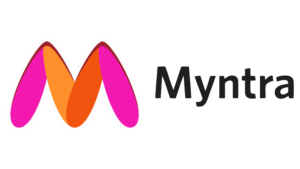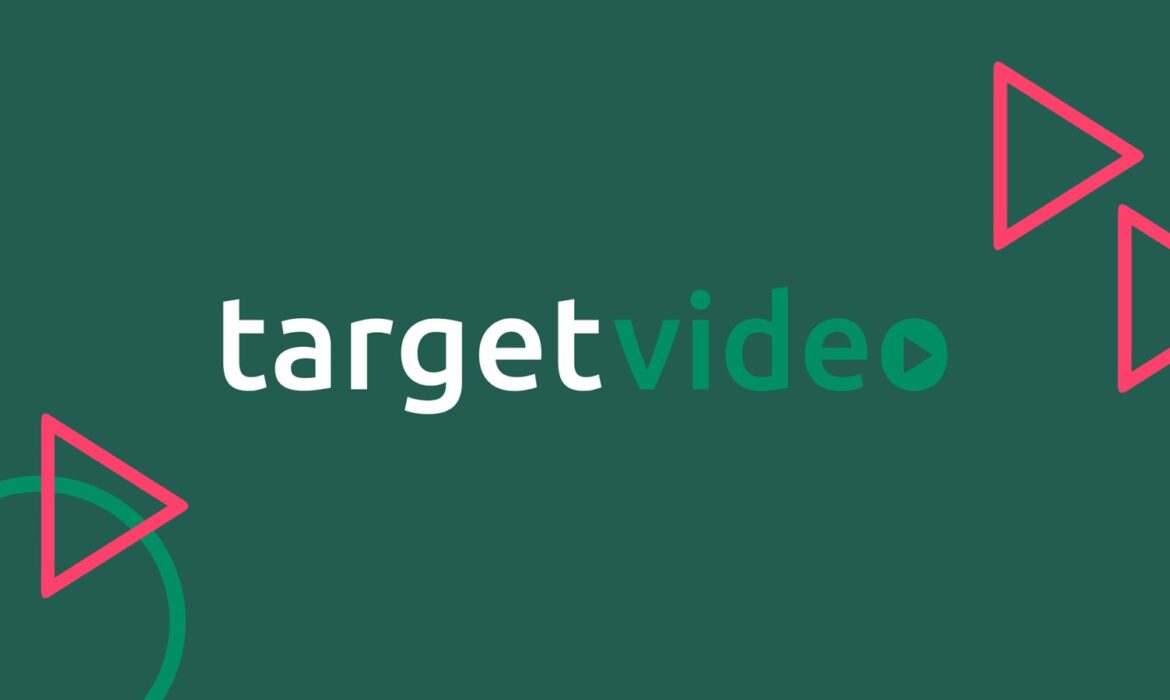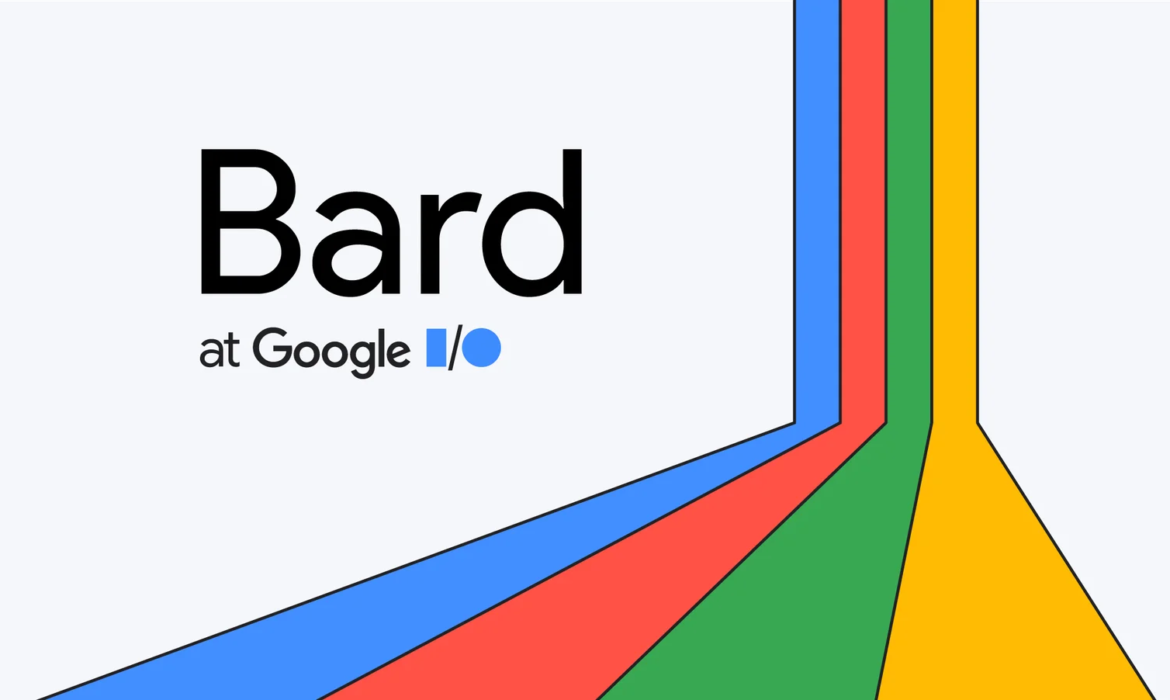How Ad Ops is Revolutionizing the Indian Advertising Landscape
Welcome to the world of ad operations, where advertising and optimization meet chaos and order, respectively. Ad operations are the foundation of the monetization strategy in the realm of digital marketing. Its function is basic. Make sure the publishers serve the right advertising at the right times. The management and optimization of digital advertising initiatives fall under this category. Ad operations have changed significantly over time. According to a 2022 forecast, revenue for ad media owners will increase by around 6% globally to a record-breaking $865 billion in 2023. As the decade progresses, it is predicted that the annual sum will rise even higher, hitting one trillion dollars by 2026.
Ad Ops is a crucial part of any publisher’s system. It is in charge of overseeing internet sales of digital advertisements and is the most profitable cash cow. In essence, it is a crucial element of ad tech. But what precisely are Ad Ops?
An Introduction to Ad Operations
Ad Ops, often referred to as Digital Ad Operations, is the term used to describe the systems and procedures that enable the management and delivery of digital advertisements. The term refers to any method used by a marketing team to manage, carry out, or improve advertising campaigns. Although there are more than a billion websites, it would be extremely expensive for advertisers to have their adverts seen by everyone around the globe. Instead, companies can attempt to target their ads at individuals who most closely match their existing customers using digital advertising markets. Here’s where ad ops come in.
They are in charge of placing the ads based on the likely audience, time zones, places, and regions. It will generate income in return through advertising initiatives. Ad operations technology links advertisers looking to buy ad space with websites that offer ad space for sale. Despite the fact that the majority of digital ad spaces are sold programmatically and without human intervention, ad operations play a significant role in setting up and overseeing these procedures.
Key Components
Ad operations is the fusion of many technological methods, tools, and stakeholders. The main categories in which the key elements of ad operations fall are:
- Ad trafficking
- Creating and managing ads
- Delivering and targeting ads
Ad Trafficking
Ad Trafficking means setting up and implementing an advertisement campaign so it runs in line with its goals.
- Scheduling – One of the crucial tasks for Ad Ops is to correctly decide and operate pre-fixed schedules for launching and running ads considering the timing of an ad is a key.
- Optimization – One of the most important benefits of digital advertising is the ability to get precise, real-time data on consumer behavior and advertising engagement.
Creating and Managing Ads
Involves choosing ad formats, developing ads, and managing marketing campaigns. To guarantee that ads are properly created and handled, ad ops specialists collaborate closely with advertisers and publishers.
Delivering and targeting ads
Professionals in ad operations employ a variety of targeting strategies, including behavioral and demographic targeting.
- Ad Performance Analytics – To optimize ad campaigns and boost performance, Ad Ops specialists track and analyze data on ad performance.
- Privacy and Ad Compliance – Ad Ops experts must make sure that ads are delivered in a way that respects user privacy and adheres to applicable laws.’
Read More: 10 Game-Changing AI Tools for Digital Marketing in 2023
Advertising Landscape in India
With cutting-edge digital technology becoming more popular than ever in the market, the Indian advertising sector is set to reach new heights. Due to the pandemic, the advertising industry has been struggling to survive the past two years. However, indications show that the Indian advertising sector has been progressively recovering. The market size was INR 743 billion in 2022, and by 2028, it is anticipated to be INR 1,412.5 billion. It has a growth rate of 11%. The Indian advertising industry is expanding at an unprecedented rate, and digital advertising is flourishing. In an effort to reach the target demographic, brands and advertisers are using agile strategies to use digital advertising.

Image credit- Research and Markets
With every second that goes by, the Indian advertising scene continues to grow. Advertising experts adopted a 360-degree strategy as technology improved to include existing and upcoming digital media. Advertising in India, a now-vast industry, is set on being the second-fastest growing advertising market in Asia. It is now more data-driven, with thorough client journeys, mass-customized messages, and attractive deals.
Benefits and Drawbacks of the Ad Ops in the Advertising Landscape

Read More: Cracking the CRED Code: A Deep Dive into its Advertising Mastery
Case Study for Brands Who Leveraged Ad Ops
In India, Zomato is a well-known B2P app for food delivery. Zomato’s excellent marketing campaign has been one of the primary causes of this enormous increase in revenue. It has made it a priority to connect with its target market consistently. Zomato grew when internet marketing became mainstream in India. For instance, appealing ad words on billboards and SMS messages to the target population showed a firm belief in their advertising skills.
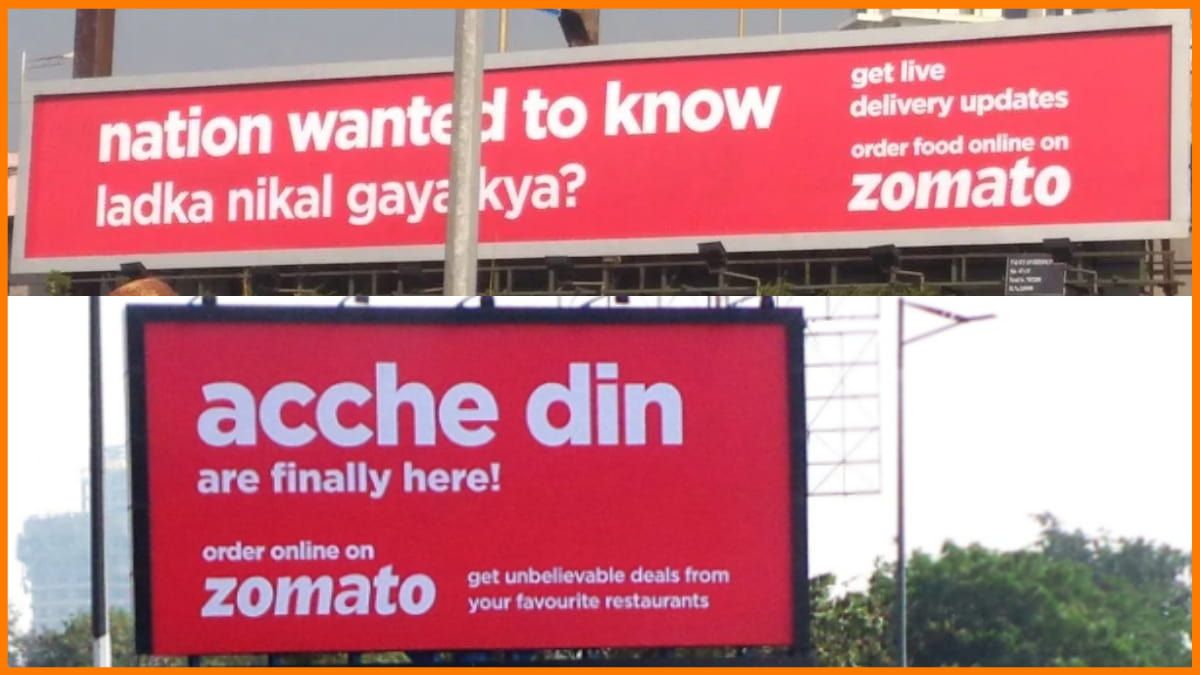
Image credit- Startup Talky
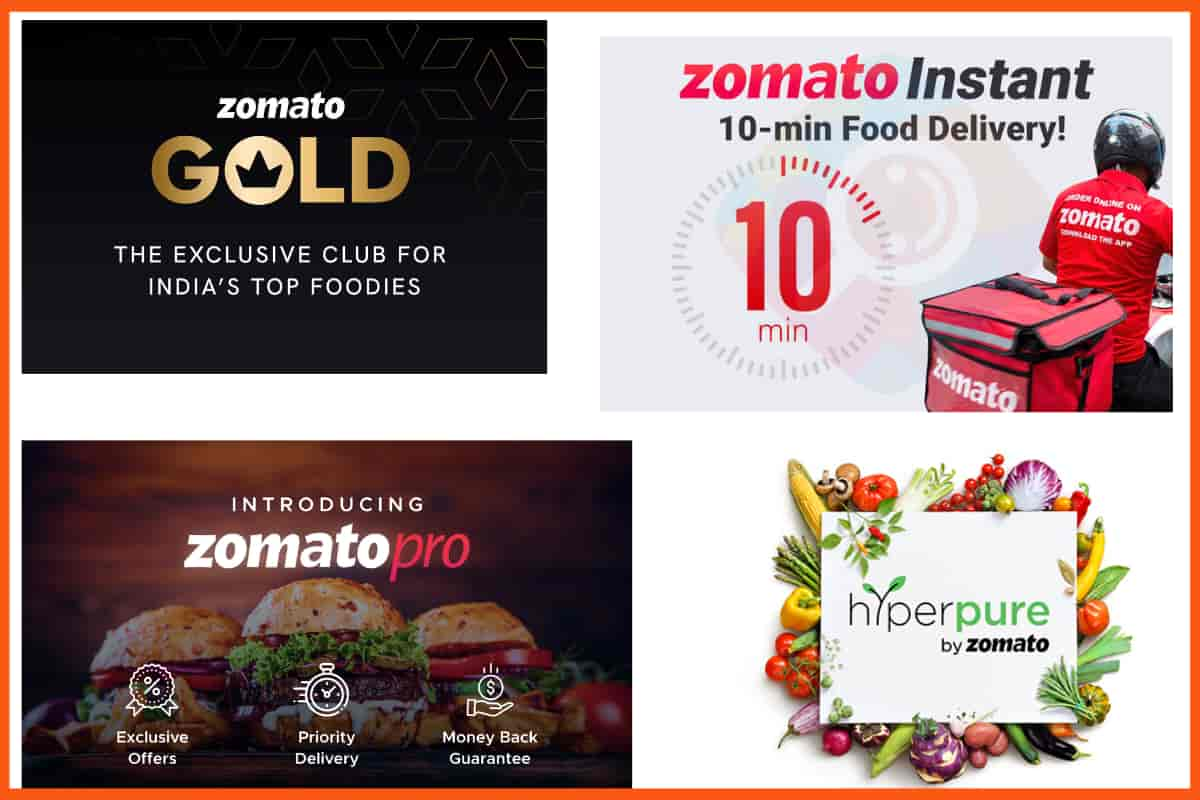
Image credit- Startup Talky
Here are some ways that Zomato’s marketing and ad operations techniques contributed to the app’s success.
- Wide-range and Powerful Outreach
- Email Tactics
- Using Social Media
- SEO Efficiency
Wide-range and Powerful Outreach
Zomato used a variety of outreach strategies in its marketing initiatives. It involves paid advertisements, email and SMS lists, and social media strategy. They studied consumer traits, ordering trends, and peak ordering hours to tailor ads for Zomato’s user base.
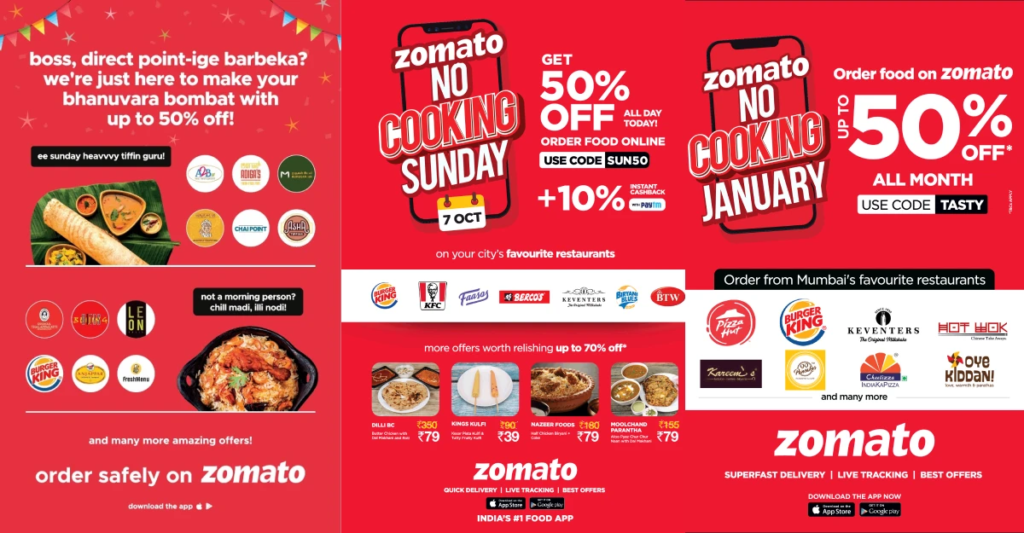
Image credit- The Business Rule
Email Tactics
Zomato targeted a potential niche by curating its emails to implement marketing strategies centered on the binge-watching culture that goes hand in hand with food.
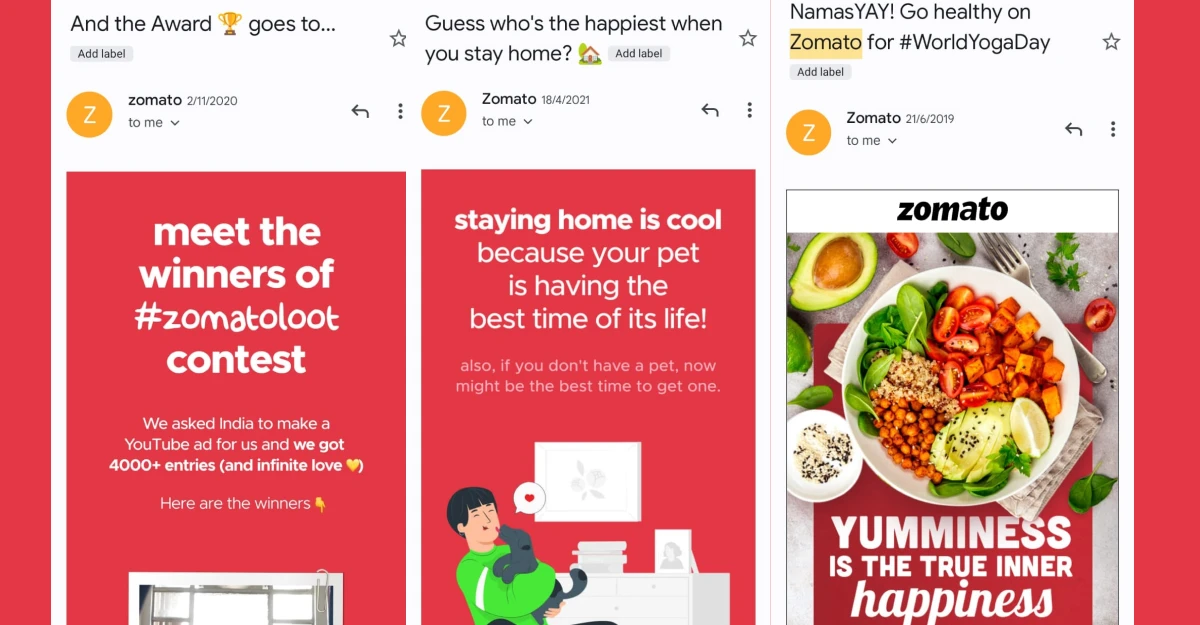
Image credit-The Business Rule
Using Social Media
Zomato depicts itself on social media with postings that are engaging on an emotional level. They interact in regional languages and make humorous memes to participate in meme

Image credit- Social Samosa via Facebook

Image credit- The Business Rule
SEO Efficiency
Zomato has produced extremely keyword-dense material that has drawn more than 67 lakh internet visitors.
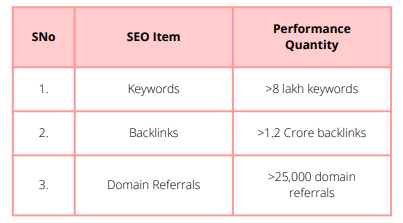
Image credit- iim skills
Zomato has a lot of influence because of its unique strategy of putting novel concepts into action on various fronts. It has always been a top priority for them to pay heed to customer comments and answer as soon as feasible.
Read More: An Innovative Triumph: Burger King x Stevenage FC Case Study
Myntra, a top-tier Indian online apparel retailer, boasts a remarkable “rags-to-riches” journey. Renowned for quality products and stellar customer service, its marketing plan revolves around key pillars for success.
- Content Marketing
- Social Media Marketing
- SEO Efficiency
- Paid Advertising
Content Marketing
Myntra has a popular blog that discusses a wide range of fashion, lifestyle, and trend-related topics. This makes the site one of the most well-liked fashion blogs in India. It leverages content marketing to establish connections with other brands and influencers.

Image credit- Myntra
Social media marketing
Myntra keeps a strong social media presence to ensure its target audience is always aware of the latest content. It routinely undertakes social media campaigns that support the development of the brand’s feeling of community. Additionally, it assists in providing a supply of user-generated material for advertising needs.

Image credit- Indian Retailer
SEO Efficiency
Myntra makes use of SEO to make sure that its website ranks as highly as possible for the right keywords. To do this, they incorporate relevant keywords and phrases into the website text.

Image credit- Madhu Sudanan via LinkedIn
Paid Advertising
Myntra promotes its website and goods through paid advertising. They employ a variety of strategies, such as display, retargeting, and pay-per-click (PPC) advertising. These techniques enable Myntra to efficiently promote its brand to a large audience.

Image credit- Afaqs
Both businesses saw enormous success as a result of their marketing plans and ad operations. These businesses would still be unknown if they had not reached their target audiences at the correct time and through the right channels. Zomato and Myntra needed to avoid bombarding customers with frequent and unnecessary ads to provide an excellent customer experience. They were aware of the demographics and preferences of their audience. Both businesses achieved the ideal mix between client satisfaction and revenue generation. The organizations were able to make informed decisions due to their comprehensive insights.
The Future of Ad Ops in India
Ad operations teams will need to embrace newer platforms and follow the lead of younger demographics as the Indian advertising market continues to grow. Digital-out-of-home (DOOH) advertising tools are among the new technologies that enable marketers to reach audiences in public spaces with customized content. Moreover, it’s clear that ad operations are no longer only a tactical role. Ad operations teams are already becoming more strategic, leveraging technology to solve business challenges and playing a key role in revenue growth because of their close relationship to revenue. However since digital media is always changing, ad operations professionals should expect to face a number of new difficulties in the coming years.
- The volume of campaigns will keep growing at an exponential rate.
- The range of available ad formats will increase.
- Utilizing first-party data effectively will be essential—even more so than it is now.
- Changes in policy will be implemented on a worldwide, regional, and national scale.
- There will be more pressure on companies to maintain high margins while increasing revenue.
- Publishers will see that ad ops teams with a tech focus can directly affect revenue.
- Ad ops teams’ increased awareness of revenue workflows and data will help them move closer to the strategic side of the business.
Another important factor in digital marketing will be the development of technology. Fortunately, generative AI has made it simpler for ad operations teams to create more content in greater quantities intended for multiple channels. This technology can be used by ad operations specialists to test ad tech platforms, generate and evaluate audience segments, and produce content in a variety of formats. Ad operations teams can concentrate more on gathering information and using data-driven insights to guide marketing and revenue decisions as generative AI enhances automation.
Final Words
Ad Ops is increasingly playing a crucial role in the Indian advertising sector by enhancing efficiency, targeting, and campaign effectiveness. In this industry, automation and personalization must be carefully balanced. Ad operations will be essential in ensuring ad viewability and brand safety as the advertising landscape changes. Cheers to the growth of ad operations and their bright future in the Indian advertising industry.
Read More: Cricket’s Advertising Blitz: Boundaries Beyond the Game!
LightBoxTV Extends Range with Total TV Solution for CTV Campaigns
With the addition of a full-service Total TV Solution, LightBoxTV, the top CTV planning and analytics platform, introduces the extension of its product line. This comprehensive solution, built on LightBoxTV’s patented technological platform, enables clients to rely on LightBoxTV with their media spending and benefit from a thorough managed service for executing CTV campaigns on its behalf.
What’s in it for advertisers?
Advertisers are challenged with effectively targeting consumers in a diverse setting, including BVOD, AVOD, FAST, and YouTube channels, as TV viewing shifts to streaming platforms. Media buyers that want to connect with their target consumers have difficulties in this complex CTV landscape. LightBoxTV is a trailblazer in the sector thanks to its origins as a software platform created to address these issues. LightBoxTV’s newest offering, a managed solution, combines proprietary planning software, data insights, and team knowledge. Furthermore, it aids in executing precisely targeted campaigns built around this technology-centric strategy.
Read More: Loop Media-Microsoft Advertising Forge New CTV OOH Inventory Category
The Full-Service Total TV Solution Benefits
Comprehensive Campaign Planning
LightBoxTV serves as a strategic partner, providing audience targeting and data-driven insights to develop effective CTV campaigns.
Ease of Access to the Segmented TV Space
LightBoxTV offers marketers a single point of access to manage campaigns seamlessly across a variety of inventory outlets such as BVOD, AVOD, FAST, and YouTube environments.
Campaign management and activation
LightBoxTV manages and activates campaigns. Furthermore, it also ensures smooth delivery across various platforms.
Accurate Performance Reporting
LightBoxTV offers thorough insights into campaigns’ performance, empowering marketers to make informed choices and improve upcoming campaigns.
With a variety of tailored audience packages available at launch, the system gives customers turnkey choices. These choices are in line with varied campaign objectives. Alternatively, users may partner with LightBoxTV to develop a custom plan for a particular target market. It will guarantee that their campaigns are effective.
Read More: Unlock The CTV Opportunity: What The Future Looks Like
Here’s what they said
Mark Giblin, CEO of LightBoxTV said,
Our vision has always been to simplify the complexities of CTV advertising through innovative technology and data-driven insights. With the launch of our Full-Service Total TV Solution, we are excited to offer advertisers a comprehensive and strategic approach to navigate the evolving TV landscape and deliver successful campaigns.
Read More: PubMatic Takes On DSPs in Video & CTV Deals, Aims for Direct Access
10 Game-Changing AI Tools for Digital Marketing in 2023
Welcome to the realm of artificial intelligence! In this day and age, where corporations are scrambling to embrace AI’s disruptive powers, it is only a matter of time before this expanding technology completely takes over our lives. AI has had a significant impact on our world today. It has transformed every industry. Digital marketing companies are more affected than ever. Through sophisticated business techniques, it is transforming the way these firms communicate with their clients and generating unparalleled success.
According to a Statista report, more than 90% of digital marketers in 35 countries use AI in their company’s operations. While businesses invest in AI capabilities, marketers are becoming more inventive in how they use this technology, from better targeting to content creation. The technology is becoming so prevalent that it is estimated that by 2028, AI in marketing revenue will reach $107 billion, up from $27.4 billion in 2023.
Many organizations now rely solely on AI solutions for advertising and marketing. Marketers in these fast-paced industries seek novel ways to reach potential clients. Still, considering AI in your business? Here are some data to help you decide.

Image Credit- Salesforce
AI is transforming every sector. We’ve looked at the importance of artificial intelligence in digital marketing and the tools you should utilize in the digital age. So, let us dive into AI, where creativity meets marketing. We will also uncover the limitless potential AI has to offer your organization to succeed in this ever-changing terrain.
AI in Digital Marketing
AI in digital marketing has helped make life and work easier and more efficient. Now, you might wonder how this technology can help marketers in their jobs. Here’s how:
- Streamline Tasks: It can automate difficult tasks like finding potential customers, creating content, and enhancing marketing campaigns, thus reducing manual efforts
- Personalization: AI has the ability to analyze and understand what customers want, their behaviors, and their needs, and formulate messages and recommendations accordingly.
- Understand customers: Marketers can use AI to analyze consumer trends from vast internet data.
- Chatbots: Customers can now have real-world conversations with AI chatbots like ChatGPT, Bard, etc. They can interact with virtual assistants to help them with queries or issues. This makes things easier for not only customers but for companies too.
- Forecast Future: AI analyzes historical data to predict future trends and market performance, allowing for more effective marketing campaigns.
- Target Ads: Analyzing customer data will help marketers to target ads efficiently. In simple words, the data can help to show ads to the right people at the right time, making the ads more effective.
- Competitor analysis: AI helps to understand how your competitors are performing, and what they are doing. This helps marketers to stay ahead of the competition and dominate the market.
AI Tools for Digital Marketing
Due to advancements in AI, hundreds of AI tools are available for you to choose from. But we have used and curated a list of ones you can implement in your business. Here are some AI tools you can use to take your business to the next level.
- AI Tools for Content Generation
- AI Tool for Content Optimization
- AI Tools for presentation
- AI tool for segmentation.
- AI tool for Campaign Optimization
- AI Tools for Email Marketing
- AI tools for SEO optimization.
- Video and image editing tools
- AI chatbot
1. AI tools for Content Generation
An important part of digital marketing, content generation means creating information or marketing material for a group of people. This can include images, texts, infographics, video, or audio files.
i. MarketMuse
Don’t you wish you had customized objective insights about your platform to avoid all the guesswork? MarketMuse offers exactly what you need! With this tool, you can analyze your existing keywords to find improvements during your research.
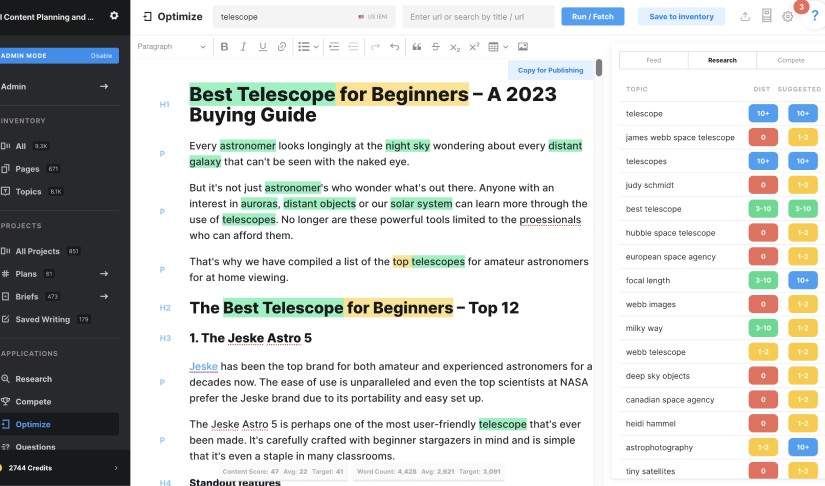
Image Credit- MarketMuse
What’s To Love About?
- Automates content audit and deciphers the most effective strategy for you and your business.
- Saves 11+ hours of time that would otherwise be spent on manual content audits.
- Helps manage your SERP rankings.
- Gives you analyses of your competitors.
- Information about gaps in your competitors’ coverage for your business to exploit.
- Shows you what topics to include, the value they will bring, and how challenging it will be to rank,
- Prompts keywords with best ranking chance, content brief templates with SEO-optimized titles, sub-headings, meta description, and usable internal links.
- Now integrated with ChatGPT for accelerating the content process.
Available Plans
Free Plan, Standard Plan starting from $149/month, Team plan starting from $399/month
ii. Writesonic by Cohesive.so
Deciding on topics and outlines for blogs is time-consuming. Add to that, writer’s block hinders a streamlined writing process. Writesonic helps you overcome all that, but also generates an entire blog in seconds. You can ask it to summarize the entire blog in a few sentences, change the tone of voice, and even upload high-resolution images from Unsplash.
What’s to Love About?
You can choose from a variety of options, including:
- 150 different templates
- 100+ AI images and 10+ AI voices
- Up to 5 integrations with unlimited PDF and audio downloads
- 10 different languages to compose, rephrase, and more
- Connect your WordPress account to publish your content directly
And the cherry on top? It’s completely FREE!
We experimented with the tool to know more about it! Here’s a prompt we put in:
Instagram caption for the role of AI in digital marketing
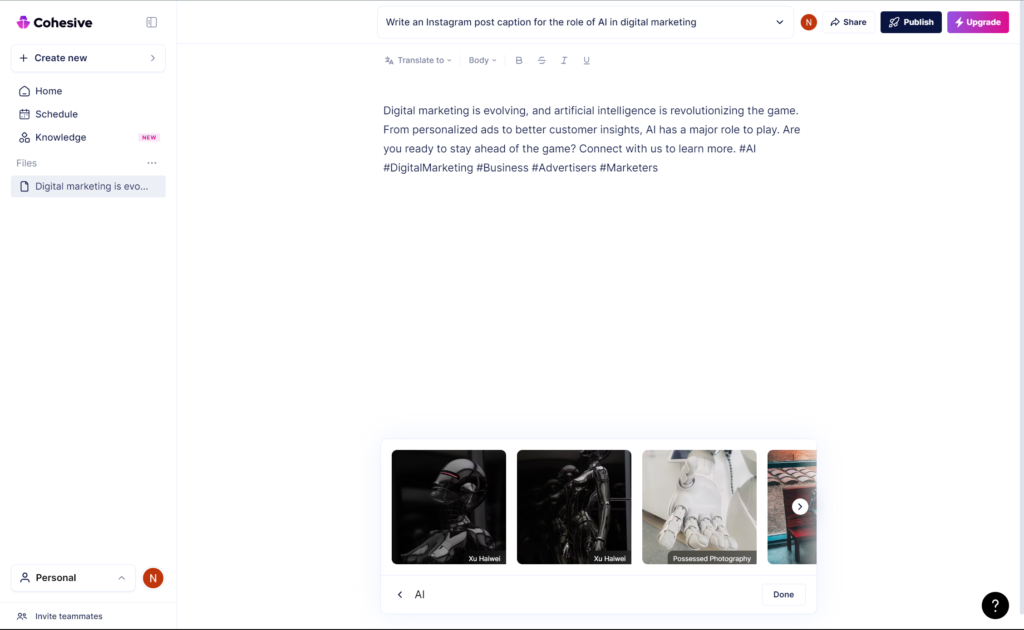
iii. Hemingway
Want to get all Grammarly benefits, but do not want to pay for a subscription? Look no further. Hemingway is the most suitable alternative to Grammarly. Different color markings show you opportunities to improve your writing. It even offers suggestions for condensing your sentences for better readability.

Image Credit- Hemingway
Another FREE tool? Sign me up!
2. AI Tool for Content Optimization
It is the process of improving your digital content, be it on the website page, blog posts, videos, and social media to increase its value and make it more relatable to your target audiences. The main objective of content optimization is to make your content visible, engage with your audience, and ultimately drive more traffic, conversions, and revenue.
i. Alicent
Do you find the content written for your website or campaign too generic and basic? Do you want a specific product to sell more or target a specific set of audiences? Alicent is here for that purpose. This tool, powered by ChatGPT helps optimize your content and even offers prompts for various use cases. It saves you time and provides a structured format for your website. Just put in your ideas at the prompt and get instant results with strategies to work with.
What’s To Love About?
- Alicent hosts a curated library of 250+ templates to choose from.
- It is supported by 50+ languages so don’t be afraid to reach other demographics.
Here’s how it works!
We have two words for this: freaking cool!
3. AI Tools for presentations
i. Gamma AI
Creating vibrant and appealing presentations is no longer a headache! With Gamma AI, you can design, customize, and choose templates from a range of available themes.
What’s to Love About?
It’s literally an advanced chatbot for presentations! You can save hours of work by designing and customizing entire slide decks with AI. All you have to do is specify the topic of your presentation. The tool creates an entire presentation within seconds!
- Enjoy endless image choices thanks to integrated apps like Unsplash, Giphy, Vimeo and many more.
- Equipped with changing the tone of voice to better suit your target audience.
- Get insights to understand which part of the presentation fascinated your clients the most
- Analysis helps determine potential areas for improvement within the business.
We tried using it to make you life easier! Might we just say, how cool was it!
Available Plans
The Free plan offers unlimited user collaboration and slide decks with basic analytics. The Plus plan starts at $8 per month. Head over to Gamma AI to design beautiful and personalized presentations!
4. AI Tools for Audience Segmentation
Audience segmentation is done to divide a large and diverse group of people into smaller and more manageable segments on the basis of shared interests, preferences, demographics, and other factors. This allows advertisers to target and customize campaigns for the segments effectively.
i. Spatial.ai
What is Spatial.AI, you wonder? No, it’s not about space! But it’s an AI tool that predicts and influences customer behavior in real time. The tool analyzes activities in the social, mobile, and web landscape and provides perceptive insights and data about consumer behavior.

Image Credit- Spatial.ai
What’s To Love About?
The major benefit is location-based segmentation. It also provides answers to your questions “what are my customers like?” or “what is the social activity in the area like?”
- They offer geosocial segmentation rather than just demographics based on consumer patterns.
- Data can be used to draft a campaign strategy by separating users into niche cohorts.
- Competitor analysis to see which market share you are competing for
- Targeting specific customer segments to improve social media engagement
- Campaign optimization based on real-time data
Available Plans
You can only sign up for the Freemium package after you request a demo.
5. AI Tool for Campaign Optimization
Campaign optimization, in simple terms, means improving digital advertising performance by adjusting certain aspects like keywords, interests, targeting strategies, ad copy and so on. This is to get desired business results.
i. Peachly.ai
AI tools like ChatGPT, DALL-E2, and Copy-AI are all fused into one. That is what Peachly.AI is! It features an advanced artificial intelligence tool for creating, targeting, and optimizing your ads. With Peachly.AI, you can breathe easily while launching a campaign. Your business can achieve maximum results with cutting-edge technology.
What’s To Love About?
All you have to do is input your ad account, and budget, and sit back. Peachly.AI will handle the rest, from setting up the campaign to optimizing it for maximum output. Here’s how to streamline the advertising process:
- Upload the website link you want to promote to Peachly.AI
- The AI will then crunch through the data, and deliver the most effective targeting strategies. Additionally, it will also draft engaging ads that reach your target audience.
- The tool will review it to make sure the ads meet industry standards and your marketing goals.
- The ads will then be published on your linked accounts.
- The tool will continuously monitor and optimize your ads for maximum results.
Available Plans
The platform offers a 7-day free trial. The starter pack starts at $29 per month, and the AI accelerator pack starts at $37 per month.
6. AI Tool for Email Marketing
A digital marketing approach which involves sending out messages and promotional content to a group of people through emails. It is the most powerful channel available to marketers that allows businesses to interact with customers directly.
i. Smartwriter.ai
Smartwriter.AI is an email marketing and outreach tool that provides templates for drafting emails. The tool generates customized email messages and headlines depending on the consumer’s profile.
What’s to Love About?
Technology scrambles through the web in search of the consumer or company your business wants to target. Businesses can obtain audience profiles from LinkedIn to draft customized messages that pique the client’s interest.
- Consists of a feature that allows businesses to personalize messages based on the target’s company news, case studies, blogs, and website.
- Provides outlines for emails, blogs, product descriptions for Shopify products, and SEO-optimized meta titles and descriptions to rank higher.
- Assists with keywords that help increase email reach and opens rather than directly marking it as spam.
Here’s an experiment we tried with this tool!
Catchy Intro Lines for sending emails to digital marketers to start using AI tools

Available Plans
The tool offers a 7-day trial. After that, the Basic plan starts at $49 per month and the Popular plan starts at $124 per month.
7. AI Tool for SEO Optimization
Search Engine Optimization (SEO) is the practice of increasing the visibility of a website on search engine results pages. Technical and content adjustments are made to the website or any readily accessible content in order to enhance traffic and ranking.
i. GrowthBar SEO
A content generation automation tool that suggests keywords to be included in a blog post. It’s a dream haven for digital marketers! GrowthBar SEO is the SEO optimization tool you need to use today.
What’s to Love About?
Consequently, in order to rank higher in SERPs, the bots scan the internet for qualified keywords.
- It assists with keyword research and rank tracker.
- Helps with blog post generator prompts and outlines for meta descriptions, newsletters, press releases, and more
- Provides a Chrome extension with extensive backlinks.
- Utilizes GPT-3 model developed by OpenAI for content generation
With this AI tool, we wanted to understand which keywords would work the best.

Available Plans
GrowthBar SEO offers a 14-day free trial. Moreover, the standard plan starts at $29 per month whereas the Pro plan costs $79 per month.
8. AI Tool for Image and Video editing
i. Craiyon.ai
Image creation is now easy! Create AI-generated images for nothing. All you need is an idea to write a prompt. Craiyon.ai will generate it within minutes.
Here in the example, we input a prompt to create an image of a business meet under the sea. The results were fascinating!
9. AI chatbot
i. Perplexity
We all know ChatGPT. But have you heard of Perplexity? It is a chatbot that goes further from ChatGPT.
What’s to Love About?
- Gives you instant results for your queries.
- Gives you cited articles related to your search request.
We even gave this tool a try to help you decide better!

Isn’t that amazing? It saves you time looking for sources to cite and helps you to focus more on the job at hand!
Available Plans
It costs nothing! Furthermore, you can choose their premium plan which costs $20 per month to avail of more features like Copilot and GPT-4.
Conclusion
Artificial intelligence in digital marketing has proven to be a boon. AI tools are not meant to replace humans’ creativity and intuition. AI provides valuable insights. Therefore, it’s up to marketers to use these insights and data to create campaigns that resonate with their audiences. Businesses can achieve remarkable results with AI and human expertise. It’s time for you to step up your digital marketing arsenal with these game-changing tools to dominate the competition in 2023!
Read More: Mastering Digital Marketing: Insights from Kosal Malladi, VP at Madison Loop
Brid.TV and TargetVideo Unite Forces to Enhance Video Publishing
TargetVideo, the Munich-based video publishing and advertising leader, acquired Brid.TV, their long-time technology partner. The joint venture will aim to meet the demands of the rapidly growing video system. They will also provide strategic solutions to lay a better foundation for publishers. The acquisition amount remains undisclosed.
Since 2014, they have advocated for a very adaptable, fully functioning video content monetization alternative for online publishers. With this merger, the digital media company will now permit its partners to leverage further developments in the video ad industry. They intend to offer a comprehensive solution that allows publishers to profit from player technology, exclusive content, and monetization. This will be the main source of revenue and expansion for the company.
Maximilian Gall, CEO, and founder of TargetVideo announced,
We are thrilled to join forces. This acquisition not only gives us access to the international market but also accelerates the development of our ad technology and ensures that our publisher network remains ahead of the curve.
Furthermore, he added,
Now, we can offer brands and media agencies an expanded range of programmatic advertising option.
Uros Jojic, founder of Brid.TV, and TargetVideo’s co-CEO added,
By infusing our platform with high quality video content and a large ad demand, we will enhance its value to users and unlock new possibilities for publishers and ad agency partners, enabling them to optimize their business.
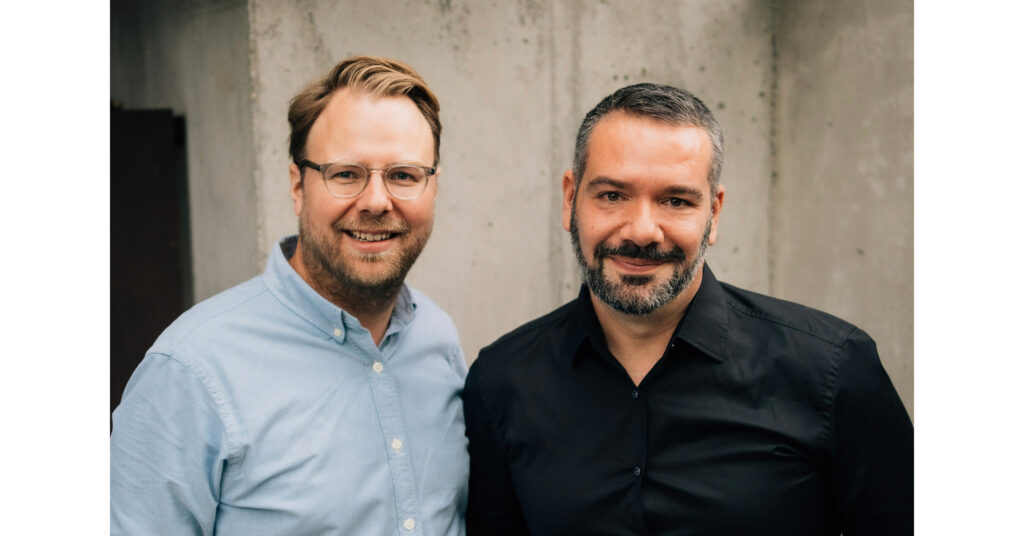
Image Credit: PR newswire; Photo by Nicky Kube
What is TargetVideo?
TargetVideo is one of the leading video marketers in Germany. They host a premium partner network, own media brands and reach 33+ million diverse users per month. They develop creative individual and content marketing ideas, and video campaigns for popular advertisers and companies. TargetVideo is an industry leader in German video content production, marketing, and technology. Procter & Gamble, Otto, Bayer, and VW are among its clients.
What is Brid.TV?
Located in Los Angeles and Belgrade, Brid.TV is a rapidly growing technology company. Their technology includes a powerful HTML5 player, a specialized video platform, an intuitive content management system, and specialized AdTech features. These help grow audiences, improve engagement, and drive revenue for publishers. Brid.TV focuses on innovation and cutting-edge technologies for providing users with the most effective video monetization solutions.
Read more: Microsoft’s Activision Blizzard Acquisition Approved by China
FTC Issues Notice to OpenAI over ChatGPT’s Privacy Data Breach
ChatGPT’s image looks rocky as its parent company, OpenAI, comes under scrutiny from the Federal Trade Commission. The U.S. consumer protection firm has issued OpenAI with a notice. The investigation is based on whether they have breached the consumer protection law, raising personal reputations and data leak concerns. It has been deemed as the quickest growing consumer app, with a record 100 million monthly active users gained within just two months of its launch. Its success started the race among big tech companies like Google and Microsoft to bring out their own AI chatbots.
Several questions regarding OpenAI’s use of artificial intelligence and data-gathering techniques have been raised since its inception. However, this move by the FTC looks like the final nail in the coffin.
The FTC Investigation
According to the Washington Post, the FTC sent a 20-page notice to the San Francisco based company, demanding records about how risks related to their AI models were being addressed. The newspaper also dubbed it as the “most potent” threat to date. The company had recently been on a global charm offensive, a move they undertook to parlay more favorable regulations for OpenAI. Their CEO, Sam Altman was on a world tour attempting to woo world leaders.
This probe comes after the FTC received numerous high-profile allegations, which includes the likes of The Washington Post, against the chatbot falsifying information and damaging people’s reputation. Mr. Altman took to Twitter to put forth his thoughts regarding the notice. He tweeted, “We’re transparent about the limitations of our technology, especially when we fall short.”
it is very disappointing to see the FTC's request start with a leak and does not help build trust.
that said, it’s super important to us that out technology is safe and pro-consumer, and we are confident we follow the law. of course we will work with the FTC.
— Sam Altman (@sama) July 13, 2023
Pivotal questions OpenAI must answer
The FTC is looking to find if the company has been engaging in unfair or deceptive practices which could result in harming the consumer reputation. According to The Washington Post, the FTC has posed the following questions to OpenAI.
- What steps OpenAI undertook to address the accusation that its products had generated statements about real individuals that were “false, misleading, and/or disparaging.”
- OpenAI had disclosed a security bug that allowed some users to see payment details and some data from other user’s chat history. The FTC has asked the company to provide detailed records for the aforementioned case.
- The FTC is also seeking information for any research, surveys, or tests that OpenAI conducted to assess consumer understanding on the AI generated “accuracy and reliability of outputs.”
- The agency has demanded extensive details about OpenAI’s products and how the company advertises them.
- OpenAI’s policies and procedure details that the company undertakes before launching upgrades. This includes a comprehensive list of language models that were held back citing security reasons.
- Thorough description of any data that OpenAI uses in order to train their products, which mirror humanlike speech patterns.
- The FTC wants to know how Open AI improves its models to make-up answers, or “hallucinate,” when the it does not have one.
What will happen to ChatGPT?
The situation seems far from ideal for OpenAI. The company will be levied with heavy fines if found guilty. The business could also be put under “consent decree,” which will determine the company’s data handling structure. A consent decree is an official order of agreement wherein the disputes are settled without admission of guilt or liability.
Not their first rodeo!
The European Union’s GDPR had previously raised data concerns against OpenAI. Italy subsequently turned the chatbot offline for a brief period. It was later reinstated given that they agreed to install age verification and allowed European users to restrict their personal data from being utilized for AI model training.
U.S falls behind on AI regulation policies
The U.S. lawmakers struggle to bring out regulations, trying to maintain a balance between technological innovation and consumer protection. The administration is deliberating over the decision whether to impose restrictions on AI tools such as ChatGPT. However, new legislation will likely take months to be in place. Lawmakers worry that imposing regulations may hinder the U.S innovation growth, which is directly in competition with China.
ChatGPT’s fate solely hangs on to their ability to provide detailed reports demanded by the FTC and its decision. The competition to take over the generative AI sector is on an all-time high, with Google’s BARD updates and Elon Musk’s new start-up xAI. This probe by the FTC only signals the upcoming challenges Tech companies will face. As technology advances and the world moves towards AI powered products, more companies may come under scrutiny.
Read More: Tête-à-Tête With ChatGPT- The Power Of AI
Google Breaks Regional Barriers by Unveiling Arabic BARD
Google has introduced Arabic language in its AI generative platform BARD, along with 39 other languages. Unlike BARD’s initial launch in May, which was only in English, Google has further taken a leap towards inclusivity. Their objective is to make it available in multiple languages.
Arabic, a very complex and intricate language, consists of several dialects, which often lead to challenges while communicating. Arabic speakers also face difficulties in online interaction since the textual form is mainly in classical Arabic. Over the years, Arabic speakers have turned to Arabeezy, an application which combines English letters and numbers, to communicate with each other.
Google has recognized these intricacies, and has launched Arabic BARD, which understands 16 diverse colloquial vernaculars. The model is powered by Google’s latest language model ‘PaLM2’ which can understand information in multiple languages. These include Emirati, Egyptian, and Saudi Arabic and it responds back in Modern Standard Arabic (MSA).
It also has the proficiency to understand code-switching, where the input is able to integrate Arabic and an additional language. The thoughtfully designed user-interface supports right-to-left scriptures, making it further easily operable.

Image Credit: Google
Features Available for Arabic Speaking Users
Google Bard in Arabic is filled with an extensive array of unique features to help with your creative potential. Here are some of them:
- Hear BARD’s responses out loud by clicking on the sound icon.
- Revisit, pin, and rename your BARD chats.
- Share BARD responses with your friends and connections using the shareable link.
- Export Python code to Replit and Google Colab, an online integrated development environment for developers to write and execute code.
Challenges Google faced while developing Arabic Script
Google has made significant technology investments to enhance its Arabic skills for the past two decades. In order to create a language model in Arabic, it was essential to understand certain words which were often spelt the same. Without pronunciations or knowing the meaning of the word, it was inconvenient for the AI to understand the same. This has been a huge limitation for all the known translation tools. What they failed to revise was that without the proper accent or diacritical signs, it was difficult to decipher the intended meaning behind them. But BARD was able to recognize that, indicating a significant breakthrough for the language.
Najeeb Jarrar, Regional Director of Marketing at Google MENA said,
Arabic speakers are now able to leverage the power of BARD, where they’re able to create new content and collaborate with this AI, experiment to generate and create new ideas, simplify topics, and also, directly get involved in the wonders of such technology.
Jack Krawcyzk, Director of Product Management at Google added,
As part of our bold and responsible approach to AI, we’re proactively engaged with experts, policymakers, and regulators on this expansion. And as we bring BARD to more regions and languages over time, we’ll continue to use our AI principles as a guide, incorporate user feedback, and take steps to protect people’s privacy and data.
So next time you want to know about some concept or brainstorm and materialize an idea, give BARD a try. You will not only be able to use unique tools, but might discover a fresh perspective to life!
Read More: Google’s BARD vs ChatGPT: Which AI Will Rule the Search Realm?
Saudi Aramco and Samsung Partner for 5G Ecosystem
Saudi Aramco has announced a partnership with Samsung Electronics, a leading Korean conglomerate, to establish a localized industrial 5G technology ecosystem in Saudi Arabia. The collaboration will begin with the development of private networks within the country. The two companies have signed a non-binding memorandum of understanding (MoU) for the proposed partnership plans.
The main objective of the collaboration is to contribute to the digital transformation of various industrial sectors in Saudi Arabia, including energy, petrochemicals, and manufacturing, by utilizing advanced 4G and 5G technologies that provide secure, fast, and reliable communication to meet critical business requirements.
The MoU follows the recent launch of Aramco Digital Company, which aims to accelerate the digital transformation in the Kingdom of Saudi Arabia, as well as the Middle East and North Africa (MENA) region. This partnership between Saudi Aramco and Samsung Electronics is expected to bring about a significant boost to the technological capabilities of the industrial sector in Saudi Arabia, further driving its economic growth and development.
Interesting Read: Adform and Digiseg offer new ad tool for Saudi Arabia advertisers
How Will Dubai’s Metaverse Sector Contribute To Its Economy By 2030?
The Dubai Ruler Sheikh Mohammed bin Rashid Al Maktoum announced earlier this month that Dubai’s metaverse sector will contribute $4 billion to the emirate’s economy by 2030.
Dubai Crown Prince Sheikh Hamdan bin Mohammed and Sheikh Maktoum bin Mohammed, the Deputy Ruler of Dubai have now directed the formation of a task force to track the latest developments in the digital economy, including technology and metaverse trends. As quoted by Arabian Marketer, Sheikh Hamdan said,
The directives of Sheikh Mohammed bin Rashid to form a higher committee to supervise Dubai’s future technological developments reflect the importance of facing the future with an open mind. The move will help us fully understand reality and explore unique ideas that will shape a brighter future for Dubai and the UAE, maximising future business opportunities.
.@HamdanMohammed, @MaktoumMohammed review vital technology trends in the metaverse and issued directives to form a task force to track the latest developments in the digital economy. #Dubai https://t.co/oY819Rs5MU pic.twitter.com/lVtk79uYLT
— Dubai Media Office (@DXBMediaOffice) May 19, 2022
But what exactly is Metaverse? Metaverse users interact with other users in computer-generated environments such as shops, learning environments, and meeting rooms, among other things, in three-dimensional, hyper-realistic virtual rooms. It combines elements of social media, augmented reality, virtual reality, video games, and other advanced technologies.
Interesting Read: Admix And JGroup Partner To Bring In-Play Advertising To MENA Brands
The Dubai Metaverse Strategy
Dubai is capable of attracting and retaining the largest technology companies in the world. Hence, Dubai Metaverse Strategy’s higher committee plans to utilize metaverse technology. This will enhance resident surgeons’ performance by 230%.and raise the output of engineers by 30%. It also aims to raise the metaverse’s contribution to one per cent of the emirate’s GDP.
During the meeting with Sheikh Hamdan and Sheikh Maktoum, Omar bin Sultan Al Olama, who is the UAE Minister of State for Artificial Intelligence, Digital Economy, and Teleworking Applications and chairman of the Dubai Chamber of Digital Economy, outlined how Dubai stands to benefit from the metaverse in a way that enables it to generate business opportunities beyond its physical borders.
Further, it is implementing activities and projects that will increase its web presence. The higher committee is actively examining opportunities and challenges. It is trying to qualify human capital so that it can excel in the virtual environment.
Moreover, it’s constantly working to establish a legal framework that addresses the needs of all sectors in the future. Forecasts indicate that business revenues from the metaverse will increase from $180 billion to $400 billion by 2025.
Interesting Read: Bloomberg Media Studios Unveils First Creative Hub In The UAE
Dubai’s metaverse regulatory authorities
Dubai’s Virtual Assets Regulatory Authority (VARA) established its Metaverse HQ earlier this month, making it the first regulator with a presence in the emerging digital space.
Dubai plans to create a prototype of a decentralized regulator model by expanding VARA’s resources beyond borders. Moreover, it intends to make it readily accessible to government and industry leaders, other authorities, and virtual asset providers to shape the future of the digital economy.
VARA’s MetaHQ will utilize The Sandbox platform, an Ethereum blockchain-based application that allows users to create, sell and purchase digital assets.
Interesting Read: OSN Rebrands Its Streaming Service With OSN+
Group Nine Launches First-Party Product In Wake Of Cookie Apocalypse!
In a fitting response to the impending disappearance of third-party cookies, Group Nine Media launched a first-party data solution called – ‘ In-GeNuity’, earlier this month. Group Nine is the publisher of Thrillist, NowThis, Seeker, The Dodo, and PopSugar.
Situated in New York, Group Nine Media is an American digital media holding company, and its latest product – In-GeNuity – is useful in matching brands with users based on content preferences. So, this first-party data solution will bring together a pizza enthusiast and a pizza delivery service.
Ashish Patel, the Chief Insights Officer at Group Nine, said –
We can say, here’s a segment of Papa John’s, here’s everybody that watched 30 seconds of a Thrillist pizza video over the last six months and we think that they’re a better audience to download your app.
Integrated with Group Nine’s G9 direct response, In-GeNuity allows direct-to-consumer brands to utilize the company’s first-party data archive, and then send targeted ads to consumers through Group Nine’s Facebook and Instagram handles. Some of the DTC advertisers that have worked with G9 Direct include Casper, Freshly, Discover Plus, and Fi.
With the In-GeNuity, Group Nine joins the vast club of brands and publishers who are looking to future-proof via their first-party data.
Ashish Patel got into a conversation with AdExchanger and was asked why the company chose to build a first-party data platform. Patel said that all the publishers are making such an effort in response to a “ cookie apocalypse” and the third-party tools going obsolete. He said that Group Nine is in a good position to offer unique audience segments in a way that if a user has read five or more pizza articles on Thrillist, or has watched a video pertaining to pizza for more than 30 seconds – then Group Nine can direct these people to a Pizza company.
Content preference, according to Patel, is the key point in In-GeNuity’s logic.
On being asked how the demise of third-party cookies is changing clientele demand, Patel said –
They’re asking for more retargetable data back. It’s table stakes at this point. We always thought that if you come to us and we hand you an audience segment that you’ll never come back. The sensitivity around that sharing has decreased from the publisher side, and the demand from the advertiser side has increased.
Patel also threw some light on how In-GeNuity will fit into the larger strategy with G9 Direct. He said that Group Nine Media want to start to incorporate and implement segments from In-GeNuity across all their activities, like top-funnel branded content work. The aim is to get that to a more targeted consumer at the top of the funnel, which should work for them and their partners.
In-GeNuity seems like a good response to prevailing times of the collapse of third-party cookies and will re-energize consumer experience.
Your Ultimate Guide to Understanding Gaming Advertising
Of the wide economic disruption caused by the pandemic, the global gaming industry is thriving. With people sheltering at home, gaming is surging. Nielsen survey reveals that 82% of global consumers played video games and watched video game content.
The global video game market is estimated to be worth $159 billion in 2020. However, marketers are facing a distinctive challenge of activating in an environment different from traditional media. Recently concluded weeklong NewsFronts presentation discussed marketers’ approach towards the growing gaming and esports industry.

Image Credit: Newzoo
Esports has gained momentum due to the tech-savvy and digitally-advanced millennials. Currently, it is very popular and is the new epicenter.
How To Activate And Maximize Brand Visibility?
Gaming is a fragmented market. Marketers can approach in different ways to tap into the competitive industry by partnering with influencers, buying on platforms, or directly going to gaming publishers.
As per Adweek reports, Douglas Veney, influencer and esports marketing manager at Nestlé, said they have partnered with influencers to drive engagement with fans.
“We can really take it from the influencer level and then build upon that approach to move into … more platform level things that are a little bit deeper down the funnel for that.”
Contradictory, the Hershey company finds influencer marketing space is highly crowded and is hard to attract attention. Another challenge for the company is to find a cost-effective strategy to run an always-on campaign in the gaming space since a similar gaming audience can be found on YouTube at a lower cost.
Another interesting case to study is on Horizon Media’s Scout Sports and Entertainment group partnered with esports team FaZe Clan who helped Burger King introduce its new plant-based burger to a young audience with its three-step approach.
The holistic three-step approach – a YouTube taste-test video, followed by a Fortnite live stream where Burger King discounts were offered, and a meet-and-greet at a local Burger King restaurant.
Nico Amantia, senior account executive at Scout Sports and Entertainment told Adweek,
“That holistic, three-pronged activation allowed us to spread awareness digitally, but also have that face-to-face interaction with fans and really give them something back, which really allowed us to have a very successful campaign.”
Understand Its Implication:
One thing is clear that gaming and esports are an upward trend with a massive audience reach. According to eMarketer, 2020 U.S. gaming ad revenues are expected to reach $3.67 billion, and esports ad revenues are estimated to reach $214 million.
Although it is watched in a TV-like environment, it cannot expect the same response from a 15 min pre-rolled ads in the gaming world. David Messinger, CMO of Activision Blizzard quoted in Adweek,
“The major mistake that people make is to take the assumptions about other forms of media and try to take it into the world of gaming,”
Marketers should look to a long-term transformation -take time, approach things properly, and build on the bets to reap the benefits as gaming and esports ads are still in the nascent stage.
Messinger further added,
“Someone who comes in and starts today may feel like they’re behind, but they’re really at the beginning of what the future is going to be.”
Read More: Mobile Gaming Industry Bank On People Locked Inside Homes Due To COVID-19.



